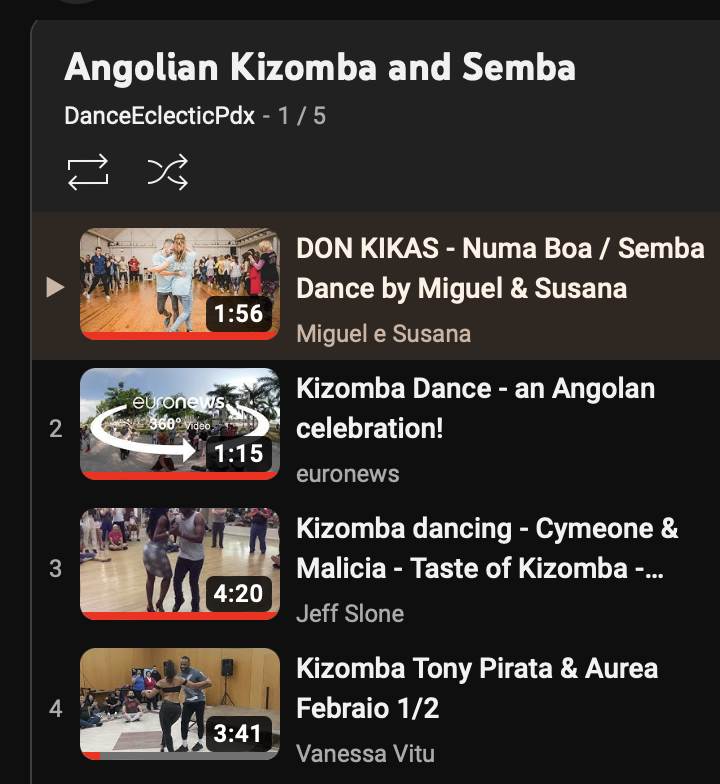Latin Dances- Kizomba
Kizomba's blend of African rhythm with a sensual, connected dance style offers a unique and deeply expressive experience. Its popularity continues to grow worldwide, inviting dancers of all backgrounds to explore its rhythmic depths and intimate connection.
What is Kizomba
Kizomba is a captivating dance and music genre that originates from Angola in the late 1970s and early 1980s. It is often described as a fusion of traditional Angolan Semba with influences from Zouk music originating from the French Caribbean. Kizomba means "party" in Kimbundu, an Angolan language, which reflects the dance's emphasis on connection, rhythm, and the joy of movement.
General Character
Kizomba is characterized by its smooth, close, and sensual dance style. Dancers typically move in a very connected embrace, with a focus on subtle hip movements and a grounded walking step. The music and dance emphasize a slow, steady tempo that encourages intimate connection and emotional expression between partners. Unlike many Latin dances that feature complex turn patterns, Kizomba's beauty lies in its simplicity and the deep connection between the dance partners.
Location within the Universe of World Dance
Although Kizomba is often included in Latin dance festivals and socials, it's important to note that it does not originate from the Latin American region but rather from Africa. However, due to its popularity in Latin dance venues and its rhythmic similarities with other Latin dances, Kizomba has been embraced by the global Latin dance community. It occupies a unique position, bridging the African and Latin dance worlds through its universal themes of rhythm, connection, and musicality.
Basic Rhythm of Its Music
Kizomba music is known for its slow, steady, and hypnotic rhythm, typically set to a 4/4 time signature. The tempo usually ranges from slow to moderate, allowing dancers to savor each beat and movement. The music features a distinctive syncopated rhythm, often with a pronounced beat on the first count, followed by a rhythmically complex pattern that incorporates both African and Caribbean influences. This rhythmic structure creates a flowing, wave-like motion in the dance.
Basic Steps of Its Dance
The basic step of Kizomba is simple yet expressive, allowing dancers to focus on connection and musical interpretation. The fundamental movement is a three-step with a pause: step together step, with the leader initiating the direction and the follower mirroring the movements. This basic pattern is danced in a closed position, with partners maintaining a close connection through their upper bodies while allowing space for hip movement.
Leaders: Start with the left foot, taking a step forward, then bring the right foot to meet the left, and step forward again with the left, pausing on the fourth beat.
Followers: Mirror the leader, starting with the right foot, stepping back, then bringing the left foot to meet the right, and stepping back again with the right, pausing on the fourth beat.
The dance also includes side-to-side movements and rotations, all performed with a smooth, grounded feeling. The emphasis is on subtlety, connection, and interpreting the music's rhythm and emotions.
https://youtube.com/playlist?list=PLIvKqt_cy_CM-5ykmAkOqIotZUG1lbiPm&si=NYz5qY3KLj6AagRJ


